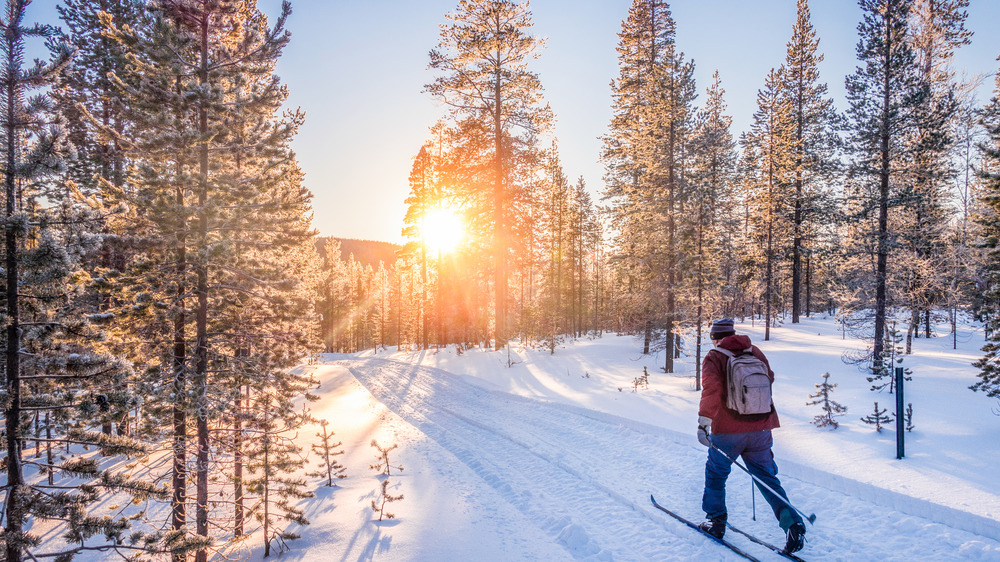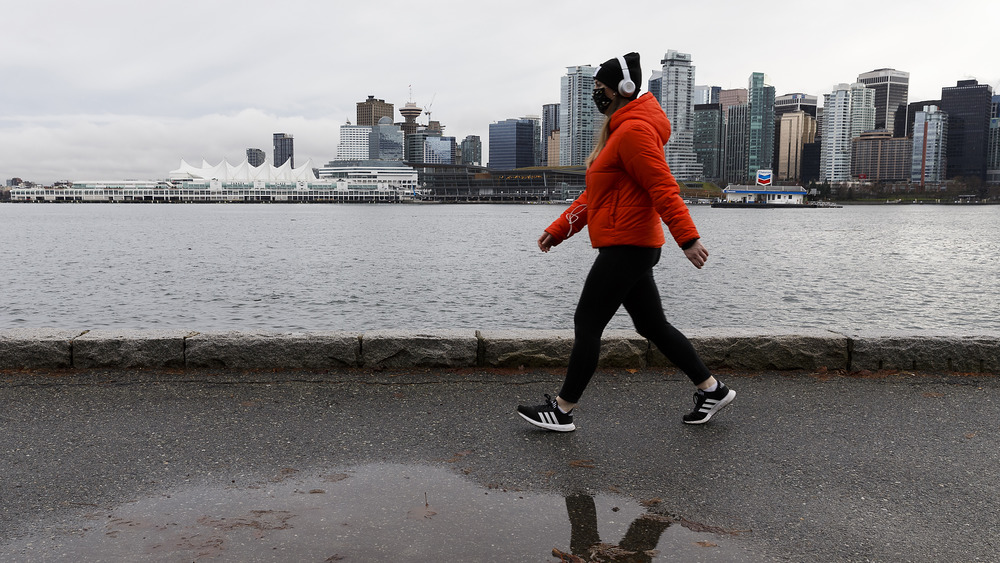How To Make Exercising Outdoors Easier In Winter
Getting outside during the colder months is a seemingly unlikely way to feel better. Experts say that walking outdoors for at least 10 minutes can give your body the amount of Vitamin D that it needs to function properly — as long as 10 percent of your skin is exposed to the sun, The New York Times notes. Taking your workout to the streets or just going for a daily walk outside can do wonders for your mood and your health. But, if that sounds like a punishment rather than a reward, know that there are plenty of ways to make your outdoor trek easier.
Obviously, bundling up is important, so invest in a few jackets or coats that keep you dry and warm. Ski gloves, warm hats, scarves and extra layers should all be on your list to collect as well. Everyday Health suggests thinking of your winter stroll outfit as being both warm and dry. The outlet notes that moisture can make your body temperature fall — fast. Stay away from cotton, and instead, opt for climate gear tops and pants made from synthetic materials. These can wick moisture much quicker and more efficiently.
On top of your synthetic fibers, layer up. From sweatshirts to sweaters and finally a big, puffy down jacket, your outfit should buffer you from the frigid temps. The outlet notes that the middle layer should act as a warmth-giving cushion from the cold while your top jacket should insulate you from the elements.
It sounds counter-productive, but run towards the wind
Beyond the number of layers you can add to your outfit, other practices can make your outdoor experience less difficult. Getting your muscles warmed up before you head out is vitally important to keeping yourself safe, Everyday Health notes. Since cold muscles are more prone to tears and sprains, make sure you get your blood moving before you head outside. Perform movements that mimic your workout routine — so if you're running, try to get some lunges in while you're inside, the outlet recommends, or you can do other stretches or squats to get things warmed up.
Once you get outside, start by running towards the wind. If you're running in a loop, that means that, on your way back — when you're at your sweatiest — you'll be running with the wind.The outlet explains that as the wind chill factor increases with wind speed, it increases your risk for hypothermia when you run against the grain —especially if your clothes are wet with perspiration. So take a few moments to see which way the wind is blowing and plan your course or walk accordingly.
Don't let the low temperatures keep you from Mother Nature and getting your blood moving! Of course, if the elements are dangerous, stay inside, and always make sure to opt for brighter colors so people on the roads can see you. When you're prepared, the cold air can invigorate your senses and help you feel your best — inside and out.

